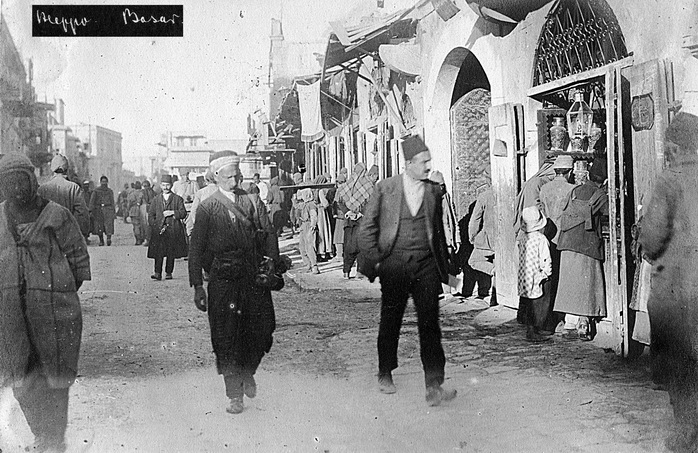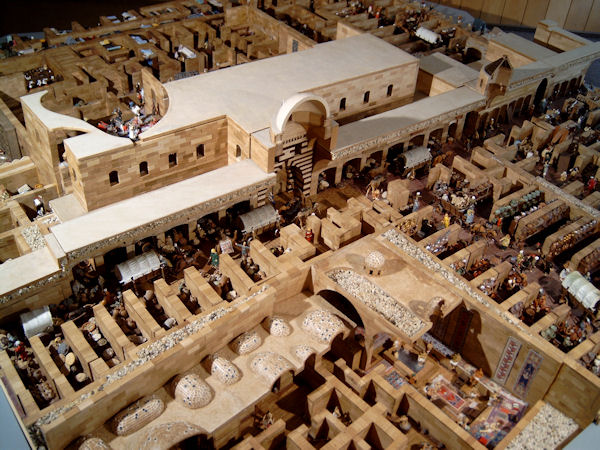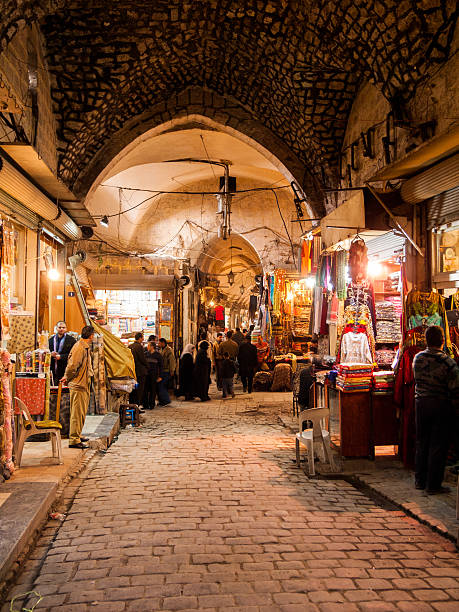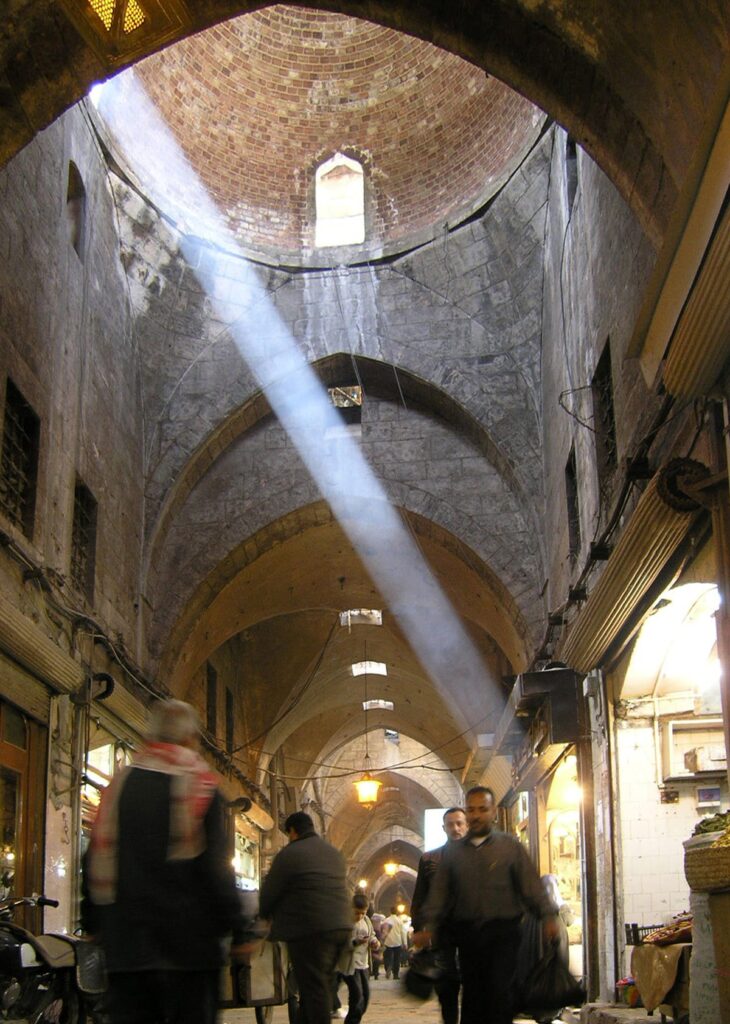Al-Madina Souq in Aleppo: The Beating Heart of an Ancient City: For centuries, Al-Madina Souq in Aleppo was one of the most important commercial hubs in the Middle East. Once the largest covered market in the world, this sprawling labyrinth of stone-paved alleys, domed passages, and aromatic shops was not just a marketplace—it was the soul of Aleppo’s ancient urban life.
Despite the damage it suffered during the Syrian conflict, the souq remains a powerful symbol of the city’s resilience and is undergoing efforts of restoration. For any visitor to Aleppo, walking through Al-Madina Souq is an unforgettable journey into the past—one filled with history, culture, craftsmanship, and human warmth.
Quick Info : Al-Madina Souq in Aleppo
| Feature | Info |
|---|---|
| Location | Old City, Aleppo, Syria |
| Type | Traditional covered market (Souq) |
| Founded | Dates back over 600 years (Mamluk period, major expansions in Ottoman era) |
| Historical Role | Center of trade, commerce, and cultural exchange in Aleppo |
| Architecture | Covered alleyways, vaulted ceilings, stone archways, wooden doors |
| Special Feature | One of the largest and oldest covered markets in the Middle East |
| Condition | Partially restored after conflict |
| Current Use | Shops, artisan workshops, cafes, and cultural exhibitions |
| Best Time to Visit | Morning to early afternoon; spring & autumn are most comfortable |
What Is Al-Madina Souq?
Al-Madina Souq (Arabic: سوق المدينة) is the historic covered market in the heart of Old Aleppo, a UNESCO World Heritage Site. The term “Madina” means “city,” and the name reflects its central importance as the commercial heart of Aleppo.
This souq is not a single market but a complex network of over 13 kilometers of covered streets and alleyways. Each section specializes in different goods—spices, textiles, gold, soap, perfumes, coffee, and traditional crafts. For centuries, it served merchants from as far as India, Persia, Anatolia, and Europe.
A Brief History

Origins in the Islamic Golden Age
The souq began taking shape in the 12th century, growing significantly during the Mamluk and Ottoman periods. Aleppo’s strategic location along the ancient Silk Road made it one of the most cosmopolitan cities of its time, and Al-Madina Souq became a vital hub in the global trade network.
Center of Global Commerce
By the 17th century, Aleppo rivaled Venice and Istanbul as a trading metropolis. European merchants opened consulates and warehouses near the souq. Goods from China, Persia, India, and Arabia passed through the city before being transported to Europe. Aleppo soap, fine silks, spices, and dried fruits were among the most sought-after products.
Architecture and Planning
The souq was built with a remarkable blend of function and elegance. The covered streets kept the market cool in summer and protected from winter rain. Stone arches, wooden doors, and modest domes create a calm, shaded atmosphere. Each khan (caravanserai) served as a warehouse and lodging for foreign merchants, while public fountains (sabils) and mosques offered places for rest and prayer.
Key Sections of Al-Madina Souq

Souq al-Attarin (Perfume Market)
This fragrant section is famous for natural oils, perfumes, incense, and spices. Visitors are greeted by warm aromas of rose water, oud, sandalwood, cumin, and cardamom. Many vendors still use old techniques to distill and blend perfumes, often passed down through generations.
Souq al-Saboun (Soap Market)
Aleppo’s legendary laurel soap—made from olive oil and bay leaf extract—has been sold here for centuries. You’ll find beautifully stacked pyramids of green soap bars, hand-wrapped in old paper, known for their purity and healing properties.
Souq al-Nahhasin (Coppersmiths Market)
This section rings with the rhythmic tapping of hammers as artisans shape brass trays, teapots, lanterns, and kitchenware. Many of the pieces are engraved with intricate Arabic designs or verses from poetry and Qur’anic texts.
Souq al-Khayyatin (Tailors’ Market)
This market is known for textiles, tailoring, and fabric sales. It showcases the rich traditions of Syrian embroidery and silk production. Until recent decades, many of Aleppo’s finest garments were custom-made here.
Khan al-Wazir and Khan al-Shouna
Two of the most notable caravanserais, these grand buildings once housed traders and their animals. Today, Khan al-Wazir is being restored and has served as a temporary space for traditional crafts exhibitions.
Cultural Significance

A Meeting Place for Generations
For the people of Aleppo, the souq was not just a place to shop—it was a place of social connection, tradition, and daily rhythm. Families came here to buy wedding dresses, exchange news, enjoy a cup of Arabic coffee, or shop for Eid and Ramadan. Many stalls were inherited businesses, handed down from father to son.
A Living Museum
The souq has always been a living museum of Islamic art, architecture, and heritage. Everything from the handmade locks on the wooden doors to the vaulted ceilings tells a story. Craftspeople working with tools that haven’t changed for centuries are as much part of the experience as the goods they sell.
Home of Oral Traditions
It was common to hear stories, jokes, and proverbs exchanged between customers and sellers. The art of bargaining was almost ritualistic—playful, respectful, and full of local wisdom. Some of Syria’s best-known proverbs originated in the marketplaces of Aleppo.
The War and Its Impact

Destruction and Loss
During the Syrian conflict, especially between 2012 and 2016, large parts of Al-Madina Souq were damaged or destroyed. Fires and shelling left many historic structures blackened, collapsed, or abandoned. Centuries-old wooden doors, artisan shops, and merchant warehouses were lost.
Human Toll
Beyond the buildings, the conflict displaced countless families whose livelihoods depended on the souq. Generational businesses closed. The hum of life that once defined the souq went silent.
Restoration and Revival

UNESCO and Local Efforts
Despite the devastation, there is hope and determination. Restoration efforts, supported by UNESCO, the Aga Khan Trust for Culture, and local craftsmen, are slowly rebuilding sections of the souq using traditional materials and techniques.
Some parts, especially near the Citadel, have reopened with local shops, cafes, and cultural centers. The restoration aims not only to preserve the architecture, but to revive the spirit of community and commerce.
Returning Merchants
Several merchants have returned and reopened their stalls, bringing back the sounds of tools, greetings, and casual conversation. Visitors are starting to return—mostly locals, but also curious international travelers and journalists documenting the city’s revival.
What to Expect as a Tourist

Atmosphere
Walking through Al-Madina Souq today is a mix of awe and emotion. Some areas are still damaged, while others are alive again with color and commerce. You’ll see traditional crafts, hear the echo of distant prayers, and feel the resilience of a city determined not to forget who it is.
Best Time to Visit
- Morning to early afternoon is best, as most shops open early and close by sunset.
- Fridays are quieter, with some shops closed for prayers.
- Spring and autumn are ideal seasons for walking tours, as the temperatures are mild.
Safety and Accessibility
- Always check current travel advisories before planning a trip to Syria.
- Go with a local guide or tour operator to stay informed and safe.
- Walking shoes are recommended; some alleys are uneven or under repair.
Photography and Etiquette
- Photography is usually welcomed, but ask before taking close-up shots of people or inside shops.
- Bargaining is expected but should be done with respect.
- Dress modestly, especially in conservative areas.
Final Thoughts
Al-Madina Souq in Aleppo is not just a market—it is a symbol of resilience, heritage, and identity. Despite war and destruction, its spirit endures. Every reopened stall, every returned craftsman, is a small act of cultural survival.
For travelers interested in history, human stories, and the authentic Middle East, few places offer the richness of Al-Madina Souq. Visiting this legendary market is not just about seeing the past—it’s about witnessing the rebirth of a city that refuses to be forgotten.
Finally.. If you have any questions, please contact us. To explore further, visit our Facebook Syria collection for rare images and cultural highlights.
Sources & References:
UNESCO – World Heritage Centre: https://whc.unesco.org
Archnet – Architecture & Heritage Database: https://www.archnet.org
World History Encyclopedia: https://www.worldhistory.org
Syrian Heritage Archive Project: https://syrian-heritage.org
Global Encyclopedia: Wikipedia



